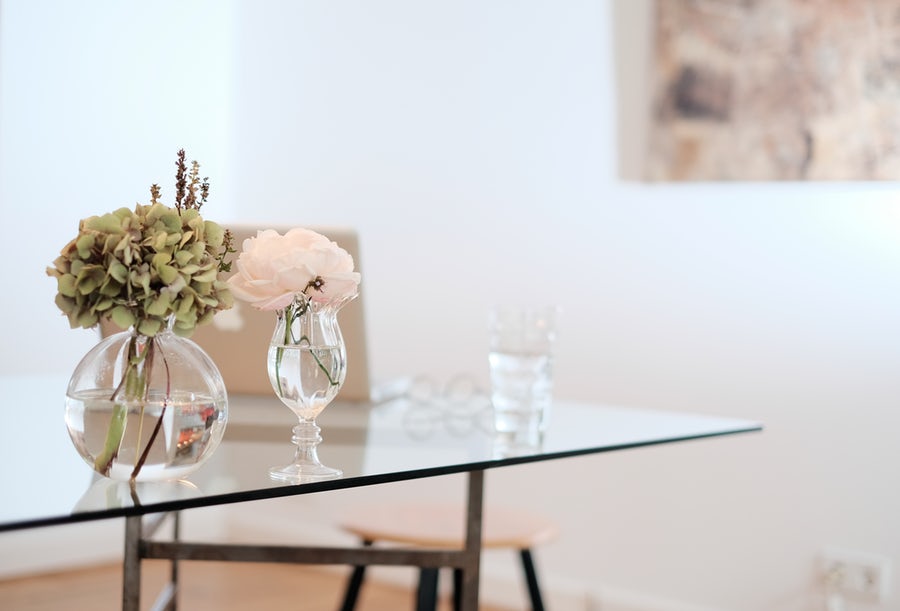Mold is common and develops rapidly in places that are dark and moist. You might not even notice it in your home for a long time. The places where mold might appear are your basement, kitchen, and bathroom, or any other room that comes into contact with water. As a matter of fact, it takes anywhere from 24 hours to two days for mold to grow.
So, it’s wise to watch out for mold regularly because if you don’t kill it early, you run the risk of getting allergies and respiratory problems. To avoid all of those health issues in the future, you should do your best to eliminate all mold at the very first sight, as well as learn how it develops and grows.
To remove mold effectively, all you may need are common household chemicals and supplies. We’ll look at three different methods for tackling mold problems. One of the methods requires hydrogen peroxide. If you don’t have that, you can use vinegar or baking soda. Also, you’ll need a spray bottle, a scrub brush, and protective rubber gloves for your hands.
Three effective solutions for killing mold in your home
#1 Hydrogen peroxide
Hydrogen peroxide has many uses. First and foremost, it’s a mild chemical used to prevent infections on the skin due to cuts or burns. It’s also used to fight fungi, treat viral and bacterial infections on the skin, and hinder their development on solid surfaces. Also, hydrogen peroxide is effective in killing mold on kitchen appliances, floors, and walls.
To get rid of mold with this method, first, pour a solution of hydrogen peroxide with a concentration of 3% into a spray bottle. Then, spray the mold-infested surface until it’s completely saturated. You should leave the solution to work its magic for about 10 minutes.
After that, use a brush or a scraper to remove the mold and surrounding moldy stains. Finally, use a rag to thoroughly wipe down any remaining mold on the surface.
#2 Vinegar
Vinegar is a common household item, and apart from its health benefits, it is also a great mold killer. This mild acid has the strength to kill most mold species — 82 percent, to be exact. Likewise, baking soda in combination with vinegar is great for eliminating other mold species.
For mold treatment, pour some white distilled vinegar into a spray bottle. You shouldn’t pour water into the bottle because the vinegar doesn’t need to be diluted. Once you’ve done that, treat the moldy surface by spraying vinegar on it. Then, wait for about an hour.
Finally, wipe down the treated surface and let it dry. Note that will take a couple of hours for the smell of vinegar to go away.
#3 Baking soda
Baking soda — as the name suggests — is a white powder most commonly used for baking. However, aside from cooking, it has other household uses and health benefits. It is good for treating heartburn, and some even use it as a mouthwash or a teeth whitener. Also, it can kill household mold and absorb moisture to prevent future mold buildup.
To eliminate mold with this method, you’ll need a spray bottle, water and 1/4 tablespoon of baking soda. First, pour the water into a spray bottle and then baking soda into the water. Then, shake the bottle until the baking soda completely dissolves.
Spray the moldy surface with the solution. You’ll have to use a scrub brush to scrape the mold off the infested surface. Once you’ve done that, clean the surface with water to remove any mold residue.
To ensure mold doesn’t grow back, spray the area again with baking soda and leave the surface to dry. Don’t wipe it down. That will kill any leftover mold and prevent it from resurfacing in the future.
Conclusion
There are many industrial mold cleaners on the market that contain toxic chemicals. They will get rid of mold in your home but at a price — health and safety. Toxic cleaning agents can cause irritations and other side effects. They are especially dangerous if you have kids in the house.
If you don’t want to use toxic retail cleaners for treating mold, you can try any one of these three non-toxic alternatives. They don’t cause any health side effects and are safe for you, your family, and the environment.
When to Seek a Professional
While these simple solutions can eliminate many types of mold, there are times when it’s wise to seek professional help, such as:
- If you smell mold, but you can’t find it.
- If there is a large quantity of visible mold.
- If there are susceptible individuals in your home. Those with respiratory conditions (asthma or allergies), young children, elderly persons or those with weakened immune systems are especially susceptible.
- If there are other hazardous materials present, like asbestos or lead.








